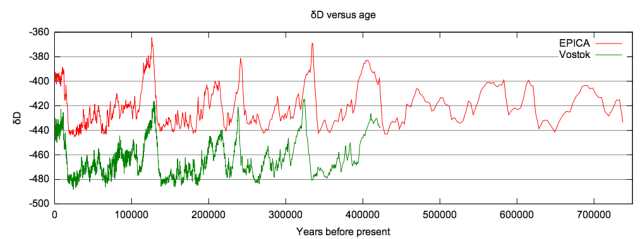You may have seen them before—the graphs from Antarctic ice cores showing the heartbeat of “ice ages” (or glaciations). If so, you probably noted a cyclical pattern, with each glaciation lasting about 100,000 years before being abruptly interrupted by a relatively brief warm period—the interglacial. Soon, the slow freeze inexorably gripped the planet again. There's a reason for this rhythmic pattern—cycles in Earth’s orbit that subtly alter the sunlight reaching the Earth.
But the graphs have long contained a couple head-scratching mysteries to climate scientists, though. First, why is the 100,000 year cycle dominant? There are several orbital cycles—some around 20,000 years long, another about 41,000 years long, and then the 100,000 year cycle. By itself, the 100,000 year cycle changes things the least, yet it drives the glacial heartbeat.

Enlarge / Glacial cycles experienced a sudden change in behavior at 400,000 years ago.
Wikimedia Commons
There are some good answers to that question, but then there’s the other mystery: once you look back about a million years into the past, the heartbeat changes. Instead of glacial cycles 100,000 years long, a more rapid pulse of 41,000 years becomes the norm. Something happened to change that. Here, too, there are some hypotheses, but the data to test them has been scarce.
Read 10 remaining paragraphs | Comments
DIGITAL JUICE

No comments:
Post a Comment
Thank's!